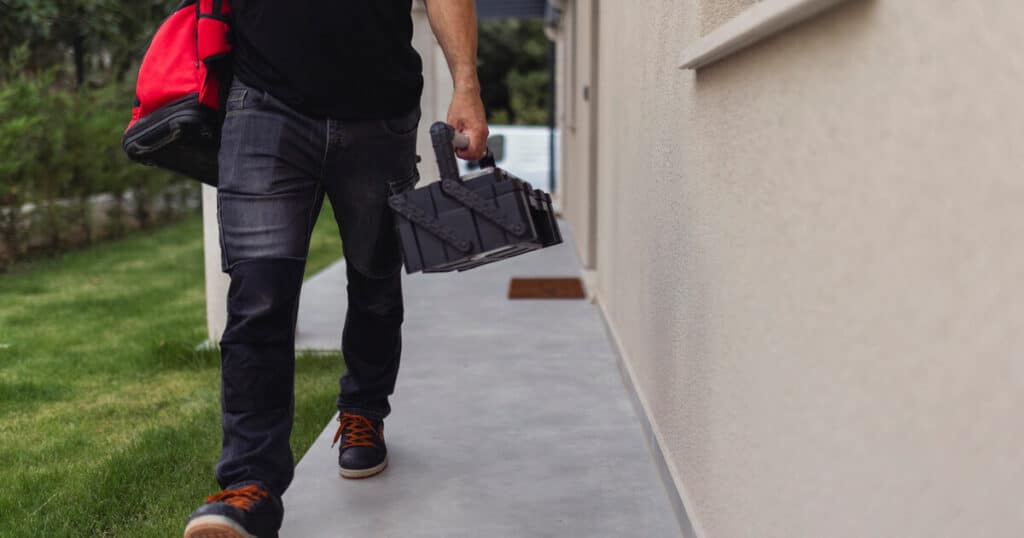How to Replace a Well Pump: A Simplified Guide for Homeowners
6 min read • November 15th, 2025
6 min read • November 15th, 2025


No water, weak water pressure, or strange pump noises? If your well system’s acting up, it might be time for a lesson on how to replace a well pump. While the process might sound overwhelming, understanding the basics will help you decide if it’s something you can handle or if it’s better to call a pro.
But before you break out the tools or schedule a service call, it’s important to know which type of well pump you have. Submersible, jet, and centrifugal pumps each have different installation setups—and your next steps will depend on which one’s in your well.

Not all well pumps are created equal — and the way you replace yours depends on how it’s set up. We recommend reading our blog How Do Well Pumps Work as a starting point. Then identify which one you have:
Centrifugal and jet pumps are relatively simple to remove and replace with the right tools and some DIY experience. If you have a deep well with a submersible pump, however, you’re looking at heavy lifting, specialized equipment, and tight spaces. Electrical mishaps or dropping the pump can lead to serious damage. Our expert well pump technician, Rob, recommends that if you’re unsure, calling a pro is the safer bet—and often cheaper than fixing a mistake.
Once you’ve confirmed your pump type and weighed the risks of doing it yourself, you’re ready for the next phase. Here’s what it takes to replace a well pump correctly.
Before you do anything, head to your home’s circuit breaker and shut off the power to your well pump system. This is essential for your safety. Once it’s off, use a voltage tester near the pump wiring to double-check that there’s no live electricity running through the system.
Before you disconnect anything, it’s important to let the system relax. Turn on a faucet and let the water run until it stops to release built-up pressure. Then, drain the pressure tank if needed. This step keeps water from gushing out unexpectedly and takes tension off your pipes, valves, and fittings, making them easier (and safer) to work on.
How you do this depends on the pump type:
With your old pump out of the way, lay out everything that was connected to it—pipes, connectors, the check valve, and any external parts. Even though you’re installing a brand-new pump, other components in the system may need attention.
Focus your inspection on parts that won’t be replaced with the pump:
A new pump won’t fix old or failing support parts—so this is your best opportunity to replace anything that could lead to trouble down the line. Think of it as a full system refresh, not just a pump swap.
Go to your breaker box and flip the switch to turn the pump’s power back on. If you have a jet pump, you’ll need to fill it with water first—this is called “priming,” and it helps the pump start pulling water.
Next, turn on a few faucets in the house. Let them run for a minute or two to push out any air stuck in the pipes. Listen for anything unusual and watch the water pressure. If everything’s flowing smoothly and the pump turns on and off normally, nice work! You’ve replaced your pump.

For most homes, replacing a well pump takes anywhere from 2 to 4 hours—but that can vary depending on the type of pump and how easy it is to access.
Jet and centrifugal pumps (above ground) are usually faster to swap out, often in a few hours.
Submersible pumps (located deep in the well) take longer—4 to 8 hours or more—since they require pulling the pump and piping from underground.
If additional repairs or upgrades are needed—like replacing pipes, wiring, or check valves—the job could take longer. Hiring a pro often speeds things up, especially if the well is deep or access is difficult.
Well pumps draw water from underground and deliver it to your home. Learn more from our detailed guide: How Do Well Pumps Work.
Possibly—if it’s shallow, above-ground, and you have plumbing and electrical experience. But for submersible pumps or any complex issue, call a professional.
A DIY job may cost $300–500 for the pump alone. Professional installation typically runs $1,000–2,500 depending on pump type, depth, and complexity.
Most last 8–15 years, though submersible models in clean water can last up to 20 years. For more information, read our blog: How Long Does a Well Pump Last.
Regular inspections, water testing, replacing filters, and using a properly sized pressure tank can all reduce wear and prevent early failure.
Look out for low or no water pressure, strange pump noises, sandy or smelly water, or frequent cycling. These can all signal pump wear or failure.
Replacing a well pump can feel like a big job—but understanding the process helps you make informed choices about whether to DIY or call in the pros. From identifying your pump type to safely installing a new one, each step plays a critical role in keeping your water system running smoothly.
If you live in the D.C. area and want peace of mind with your well pump replacement in Montgomery County, Heil Plumbing is here to help. Our licensed plumbers know Maryland wells inside and out and can handle everything from diagnosis to installation with skill and care. We’d be honored to serve you.





